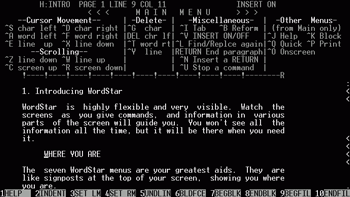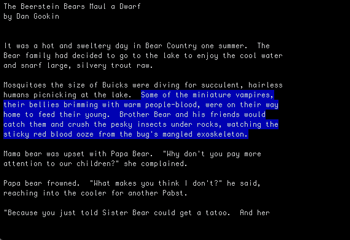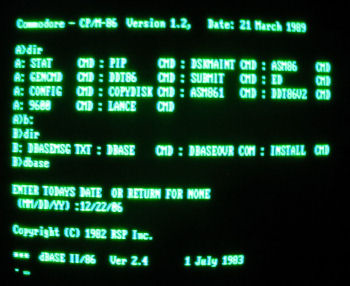The history of the personal computer is dotted with amazing software success stories. The scruffy programmers who slave over their code are rewarded with fame and financial success. But can they do it again? Often times, their second effort smells less like number one and more like number two.

Figure 1. Lotus 1-2-3.
First Act: Lotus 1-2-3. While it was not the original spreadsheet program (VisiCalc was in 1979), Lotus 1-2-3 was the very first killer application on the brand new IBM PC back in 1983. The program was easy to use and tremendously popular, thanks to its ability to be modified and customized. It was one of the first computer applications to be embraced by the business community. Lotus sold millions of copies.
Disastrous Second Act: With the tremendous success of Lotus 1-2-3 the computer community was eager for the follow-on, which promised to be bigger, better and even more popular. After years of waiting, the disappointing descendant was called Lotus Symphony. It combined spreadsheet, word processor, and graphics into one huge, ugly, sluggish program that hackers quickly dubbed, “Lotus Sympathy.”

Figure 2. Wordstar.
First Act: WordStar. The king of all word processors, WordStar originally dominated the pre-IBM PC world of microcomputers. It was one of the first word processors to be re-written to run on the new IBM PC back in 1981, and it’s name was pretty much synonymous with “word processor,” as in, “I need to type this up on my WordStar and give copies to everyone in the computer club.”
Disastrous Second Act: Timidly operating under the “don’t mess with a good thing” banner, the folks who made WordStar did little to update or improve their software for years. During that time, lots of competitors with newer, fancier features cropped up. Eventually WordStar 2000 debuted in 1985, some would say 15 years too soon. The problem? WordStar 2000 was painfully slow and utterly incompatible with the original WordStar. But by then it was too late; newcomer WordPerfect was quickly converting old WordStar users by the tent full. Speaking of which:

Figure 3. WordPerfect 4.1
First Act: WordPerfect. The Emperor of Word Processing-Land was WordPerfect back in the late 1980s. It stood out among all the competitors and ultimately won WordStar’s crown, primarily due to its famous and utterly free telephone technical support. At one point in time it looked like there was no stopping WordPerfect from becoming the ultimate, all-time computer program.
Disastrous Second Act: As with WordStar before it, the WordPerfect people were too long in sitting on their laurels. Eventually the bean counters took over and eliminated the free tech support, which might have saved money in the short run, but it killed WordPerfect in the long run. WordPerfect’s successor, WordPerfect For Windows, was too late in coming to Windows market and ran much too slowly. (Some say this was deliberately done to avoid competing with the older, DOS-based program.) WordPerfect for Windows got the snot kicked out of it by Microsoft Word, which continues to dominate the word processing category today.

Figure 4. dBASE II
First Act: dBASE II. The granddaddy of database management software, dBASE itself has a rich history dating back to the 1960s. But it’s best incarnation was known as dBASE II (two) in the early 1980s.
Disastrous Second Act: Up a notch from dBASE II was the logical choice of dBASE III. Sadly, dBASE III was much slower than its predecessor and would run poorly (if at all) on older PCs. dBASE II continued to sell (and sell well) for many months after dBASE III was introduced.
Ghastly Third Act: By the time dBASE IV was released in late 1988 the database market was thick with competition, some of which was much faster and better than dBASE IV. Not only that, dBASE IV was notoriously buggy.
Ruinous Fourth and Final Act: dBASE V was the final incarnation of the dBASE line, introduced in 1993. At that time not only was the rest of the computing world switching over to graphics-based databases, the database community was embracing the SQL (Structured Query Language) standard, with which dBASE was incompatible.


I hear people use the term “word processor” a lot and Im not sure if they are referring to software which ran on personal computers or dedicated hardware. Which was more popular, the dedicated hardware or software packages?
Also I think its interesting that the two most powerful text editors vim and emacs are still primarily console apps. I wonder if those old console word processor apps had good hotkey features that people still might use.
Comment by BradC — October 11, 2013 @ 3:25 pm
Before about 1980 or so, “word processor” referred to a system, such as Wang. But around that time, microcomputers were cheaper and so was the word processing software, such as WordStar.
Actually, today we would call those early word processors “text editors” because that’s pretty much all they did.
The J and K keys in vi move down and up through a document. On Facebook, J and K move down and up through the comments. So, in a way, those handy commands are still with us!
Comment by admin — October 11, 2013 @ 4:25 pm